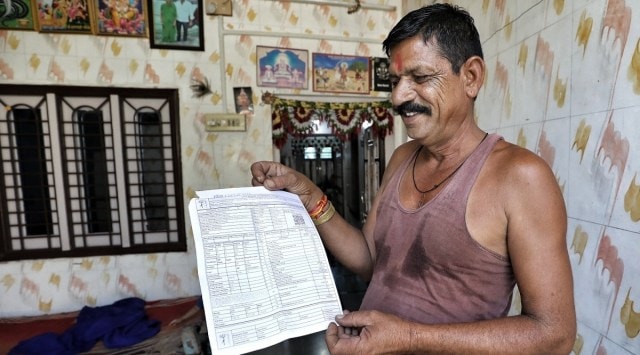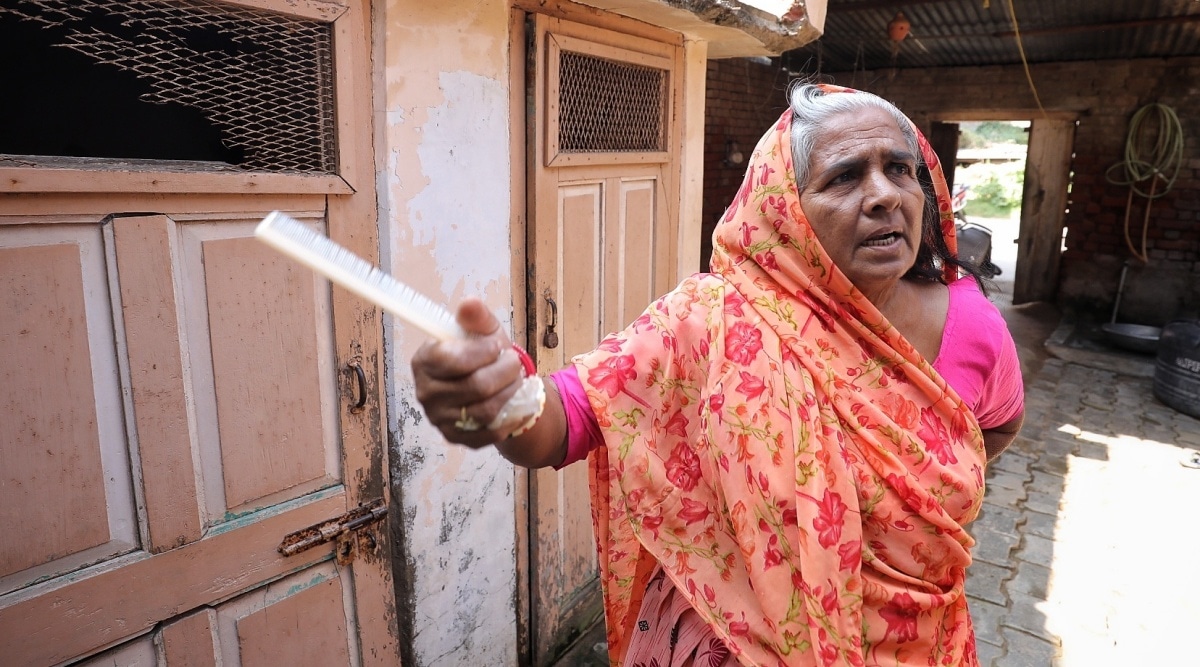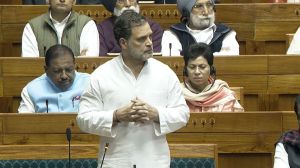How Modhera emerged as the brightest spot on India’s solar map
Residents of India’s first 24X7 solar-powered village are saving 60 to 100% on electricity bills
 Vajaji Solanki displays his bill which shows that he has earned Rs 1,325 selling solar energy from his rooftop at Modhera. Nirmal Harindran
Vajaji Solanki displays his bill which shows that he has earned Rs 1,325 selling solar energy from his rooftop at Modhera. Nirmal HarindranWith the festive season at the doorstep, Manjulaben Prajapati wants to buy an electric two-wheeler for her daughters.
Manjulaben lives in Modhera, India’s first solar-powered village in Mehsana district of Gujarat, also known for its iconic Sun Temple, built by the rulers of the Chalukya dynasty.
Her house is among the 1,300 dwellings in the village having rooftop mounted solar power systems, or solar rooftops as the villagers call them, which supply electricity to the households during the day. The solar panels are linked to a battery storage plant, which provides power at night. For several Modhera residents, the solar rooftops have helped bring down power bills by 60-100%.
“The last bill shows that I have Rs 800 as credit in my account. This means we have generated more power than we consumed. Earlier, we used to pay about Rs 2,000 every two months,” says Manjulaben, adding that she has bought a brand-new refrigerator and a domestic flour mill with the savings.
 Kashiba Solanki needs money to strengthen her roof before panels can be put. Nirmal Harindran
Kashiba Solanki needs money to strengthen her roof before panels can be put. Nirmal Harindran
With electricity freely available, she adds, “I want to replace our Honda Activa scooter with an electric two-wheeler. That way we will save on fuel cost too.”
The solar rooftops with 1kw capacity are being installed free of cost by the Gujarat government as part of a “demonstration project” at Modhera, which was declared India’s first 24X7 solar-powered village by Prime Minister Narendra Modi on October 9. A total of Rs 80.66 crore have been spent so far, with the Centre and state splitting it, with Modhera generating 2 MW of solar power.
Around 400 households in the village though are yet to get solar panels, among them Kailashba Solanki, a neighbour of Manjulaben.
“Our roof is weak and it will not sustain the weight of the solar panels. Strengthening the roof will cost Rs 50,000 and we do not have the money,” says Kailashba, who has to support six members in his family.
Inspecting the ongoing work in the village, Rajendra Mistry, an official from Gujarat Power Corporation Limited and the chief project officer of the solar project in Modhera, says: “Seventy-eighty percent of the households are financially very weak. It was not prudent to charge them for the solar rooftops. We are trying to make it more financially viable to replicate in other villages.”
The Modhera project is India’s first grid-connect battery energy storage system, Mistry says. “It is a net power generator during the daytime. In the evening, when solar panels stop working, it becomes a net power consumer and uses the Battery Energy Storage System (BESS) at Sujjanpura.”
“PM Modi wanted Modhera to draw inspiration from the Sun Temple. Solar power also represents the deity inside the temple,” says Pradeep Gadhvi, an official of Gujarat Energy Research and Management Institute, who is also associated with the project.
The power generated also helps recharge the electric vehicles at the temple. “A bus, a couple of cars as well as two-wheelers can be charged. This is being provided for free now,” says Mistry.
The project, which began in the first half of 2020, was delayed due to Covid-19 and then it took time to convince the villagers. In the first phase, only 37 houses were roped in.
The solar panels are connected to a smart meter that sends the data directly to the electricity supply company.
Several villagers too remain wary, and report voltage fluctuations which, they fear, could damage their electrical appliances. Some complain that the solar panels are difficult to clean.
A few complain their bills have not come down, among them Elaben Prajapati, who works as a farm labourer. “We were told the solar panels would reduce our electricity bills. PM Modi came and went, but our bills have remained the same.”








